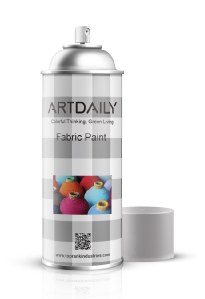As the most sensitive fluorescence bioassay method, DEFIA has been widely used in scientific research and medical field. Commercial DELFIA kits use traditional molecular probes such as rare earth chelates as labels, which have the disadvantages of low rare earth ion labeling ratios (up to 10-30 rare earth ions), poor photochemical stability, and high cost. Compared with rare earth chelates, rare earth nanoluminescence materials have the advantages of high chemical stability, good modifiable properties, and low potential biological toxicity, and are currently a promising new generation of fluorescent biomarker materials. However, due to the forbidden transition characteristics between the electronic configurations of rare earth ions 4fN, the direct use of sensitized luminescence of rare earth ions cannot meet the demand for high sensitivity detection. Therefore, scientists envision whether or not they can combine DELFIA technology to use rare earth nanocrystals as nanoprobes instead of molecular probe rare earth chelates and nanocrystallite highly concentrated rare earth ions (each containing tens of thousands of rare earth ions). The labeling ratio is increased, and the nanocrystals are dissolved by DELFIA enhancing solution to generate a large number of strong light-emitting rare earth micelles, thereby achieving the purpose of improving the luminescence and detection sensitivity. Under the support of the National Natural Science Foundation of China’s Outstanding Young Scientists Fund, the "973" Program of the Ministry of Science and Technology and major scientific instrument development projects, the China Academy of Sciences's Strategic Pilot Science and Technology Project and the Innovation International Team Project, the Institute of Physical Structure Research of the Chinese Academy of Sciences, Chinese Academy of Sciences Chen Xueyuan’s research team at the physical key laboratory and Huang Mingdong’s research team at the State Key Laboratory of Structural Chemistry collaborated to develop a fluorescence immunoassay technique (DELBA) based on enhanced dissolution of rare earth nanocrystals. This technology follows the operational flow of the commercial DELFIA. It simply replaces the molecular probe rare earth chelates with rare earth nanoprobes, increases the labeling ratio of highly concentrated rare earth ions with rare earth nanocrystals, and greatly enhances the luminescence and detection sensitivity of the system. . Through high-resolution fluorescence spectroscopy, elemental analysis, and other means, the project team used ~9 nm NaEuF4 as a nano-fluorescent probe and β-naphthyl trifluoroacetone (β-NTA) as enhancers to reveal the enhanced solubility of rare earth nanocrystals. Mechanism and high sensitivity DELBA detection of carcinoembryonic antigen (CEA), a broad-spectrum tumor marker for the human body, with a detection limit of 0.1 pg/mL, which is nearly 3 orders of magnitude lower than commercial DELFIA kits. value. Further, the team used the development of DELBA technology to test 20 cases of serum CEA values ​​in tumor hospitals. The results were basically consistent with commercial DELFIA kits, and the accuracy and reliability of the method were verified by measuring coefficient of variation and recovery. The above-mentioned work was published online in the form of communication on August 11th in the magazine "German Applied Chemistry" (Angew. Chem. Int. Ed. 2014, 53, DOI: 10.1002/anie.201405937), and applied for China and PCT international inventions. patent. Previously, the team has made a series of research progresses in the detection of tumor markers based on rare earth nano fluorescent probes. For example, up-conversion fluorescence (UCL) detection of the human chorionic gonadotropin β subunit (β-hCG) of disease markers using LiLuF4:Yb3+, Er3+ up-conversion nanofluorescent probes (Angew. Chem. Int. Ed) 2014, 53, 1252; Frontispiece); Time-resolved fluorescence resonance energy transfer (TR-FRET) detection of human tumor markers soluble urokinase receptor (suPAR) using ultra-small CaF2: Ce3+/Tb3+ nanofluorescent probes. Angew. Chem. Int. Ed. 2013, 52, 6671).
TR Industies endeavours to assimilate art into our daily life. Enenvironmental & safe aerosols and coatings to help
everybody enjoy creative moments, such as Fabric Paint ,Upholstery Paint,Wood Spray Paint,Graffiti Spray etc,can art/renew on fabrics,
leatherware, metalware, ceramics etc.
Art & Craft Paint,Acrylic Paint Sets For Children,Waterproof Spray Craft Art Paint,Green Art & Craft Paint,Fabric Paint,Upholstery Paint,Wood Spray Paint,Graffiti Spray Ding Wei Paint Technology. CO,ltd , https://www.toprankchemical.com

Research Progress on Fluorescence Immunoassay of Nano-probe Nano-probes by Fujian Institute of Materials Science and Technology